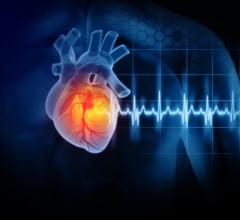
September 24, 2012 — Surgically inserted cardiac devices play an important role in treating certain heart problems. In fact, an estimated 400,000 devices, including pacemakers and cardioverter defibrillators, are implanted each year in the United States. Still, selecting patients in whom these devices will provide the most benefit can be challenging.
To help clinicians keep pace with the emerging clinical research and advances related to device-based therapies, the American College of Cardiology (ACC) Foundation, American Heart Association (AHA) and the Heart Rhythm Society (HRS) have jointly released updated guidelines for the use of devices in treating heart rhythm disorders. Chief among the updates are expanded indications for cardiac resynchronization therapy (CRT), a procedure that is used to better synchronize or coordinate the rhythm of the heart, thereby improving the way the heart functions. The revised guidelines reflect new evidence that patients with mild heart failure or NYHA class II should also be considered for CRT based on what their electrocardiogram (ECG) looks like.
“These are patients who had previously been excluded from receiving CRT, but studies have shown they can benefit from this procedure. It can really improve their lives by delaying or avoiding worsening heart failure,” said Cynthia M. Tracy, M.D., George Washington University, chair of the writing group.
Within the guidelines, the writing group clarifies and provides recommendations about which patients are most likely to benefit from CRT. “There is growing evidence that patients with the widest, most abnormal looking ECG potentially benefit most compared to patients whose ECG are less abnormal,” said Tracy. In particular, patients with wide left bundle-branch block complexes as seen on their ECG seem to do well with CRT.
“It’s very difficult on a case-by-case basis to assess a patient’s likelihood of success,” said Tracy. “Implanting a device is relatively straight forward, but it’s not completely without potential for complication, and there are a lot of management issues that come up. You want to be sure you are doing the right thing by your patient and choosing the right device for the right patient.”
By pulling together and examining the best evidence to date, she says the guidelines can provide physicians with a clear indication for who is most likely to benefit from device-based therapies. In addition, other modifications have been made to help physicians decide which patients with atrial fibrillation might benefit from CRT. In particular, some patients with weak hearts and irregular, slow heart rhythms can benefit from CRT. The committee also summarized the minimum frequency of in-person and remote monitoring of patients with cardiovascular implantable electronic devices.
The original guidelines for device therapy were issued in 2008 and became the first to combine indications for all cardiac implantable electronic devices. The writing group reviewed these earlier recommendations and, other than the new and modified recommendations for CRT, they remain unchanged and current policy for the ACCF and AHA. “The updated guidelines extend and clarify current best practices and will continue to evolve as technology advances,” Tracy said.
The writing group included experts in device therapy, cardiovascular care, internal medicine, cardiovascular surgery, and pediatric and adult electrophysiology. The guidelines were also developed in collaboration with the American Association for Thoracic Surgery, Heart Failure Society of America and Society of Thoracic Surgeons. A related appropriateness use document is currently in development that will help to further interpret the best science and apply it to various clinical scenarios.
The guidelines will be published in the Journal of the American College of Cardiology; Circulation: Journal of the American Heart Association; and the Heart Rhythm Journal.
For more information: www.cardiosource.org/ACC, www.heart.org, www.hrsonline.org


 November 12, 2025
November 12, 2025 









